Price + Reviews = High Conversion Rate
One of the most challenging questions facing sellers today is how do we create a listing with a high conversion rate?
Thankfully, the formula for creating a high-converting listing is pretty simple! Price + Reviews = High Conversion Rate.
From an Amazon market research report in the figure below, we know that Amazon's top 3 listings are usually nearly 20% cheaper than the market average unit price. Clearly, when all else is equal, more buyers always prefer an inexpensive budget. But most savvy sellers also know that lower product costs are a sustainable competitive advantage, but lower prices are not. However, for a new product in the honeymoon period, valuable conversion data can be obtained by using a marketing method that is about 20% lower than the average unit price of the market. Although this allows us to recover only the cost or less revenue, the editor thinks it is still very worthwhile. Yes, we need the courage to fight at all costs.
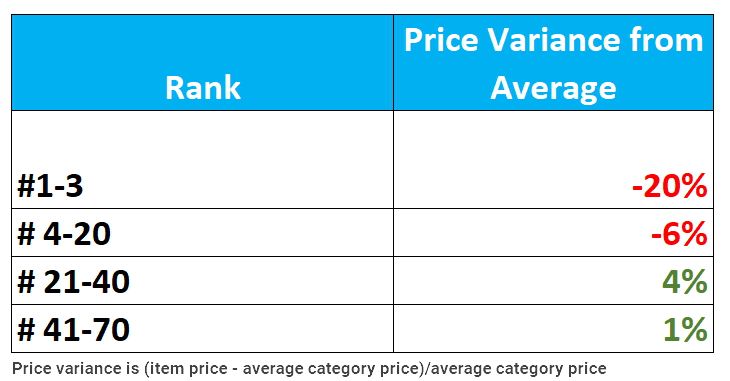
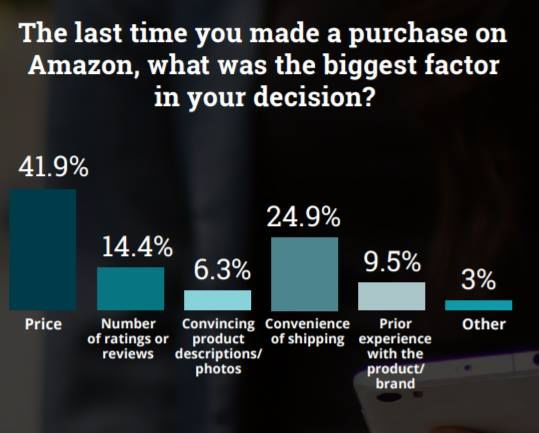
Price is difficult to control, evaluation, on the other hand, is very easy to control. Of course, we also need to be aware of the need to avoid human manipulation of reviews (which may lead to Amazon permanently terminating the seller’s selling authority). But no matter what, we must understand that praise is very important to improve the conversion rate of Listings. From the previous Amazon consumer research report, we can know that the most important factors that affect consumers' purchasing decisions include: price, logistics, and evaluation. In today's Amazon marketplace, it has become very difficult to get buyers to click our buy button without some reviews.
Display informative main images and videos
When we talk about Amazon conversion rates, if the price and reviews are King, then the main image and video are Queen. Main images and videos are both one of the best tools for creating high-converting listings and one of the things that most sellers can easily screw up. At least four types of product master images are required in our listing:
Product map on white background
Product Infographic
life scene diagram
Product Specification Chart
One of the most amateurish mistakes that most sellers usually make is that they often use text information to describe the key features of the product in the five-element selling point and product details section, but there is no text information in the most important part of the product main image. Here's a good example of using textual information in the main product image to illustrate the core functionality of a product:
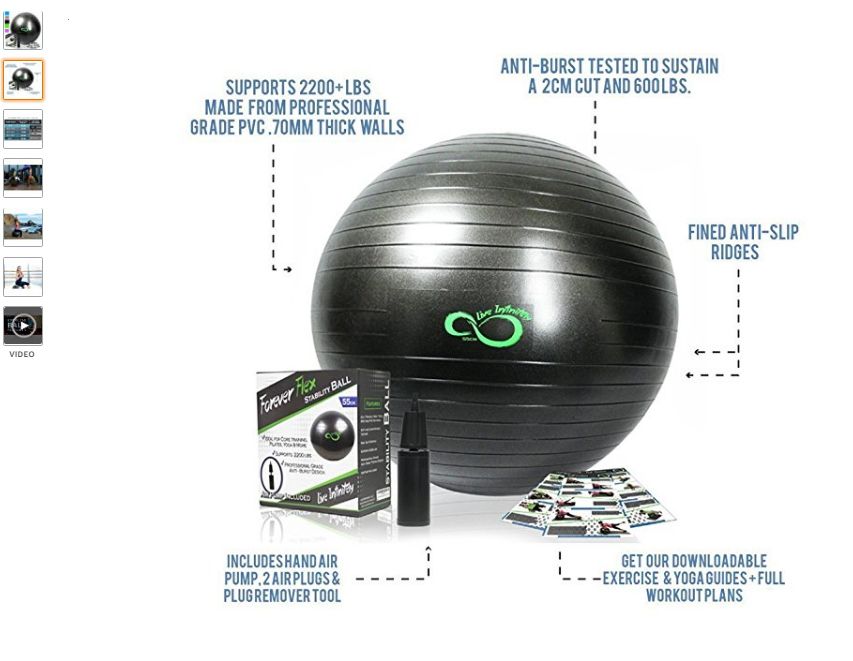
Video is also a pretty powerful conversion rate tool, and now that Amazon has opened it up to all brand-registered sellers, the most effective way to tell a product-related success story is through video.
Take advantage of A+ pages
Amazon claims that using A+ pages can increase the conversion rate of listings by about 10%. So, on the surface, adding some creative design elements to our listings through A+ pages seems to be a huge boost to conversions. But in A+ page A/B testing, no noticeable difference was noticed. Buyers don't seem to be looking below the five-element selling point very often.
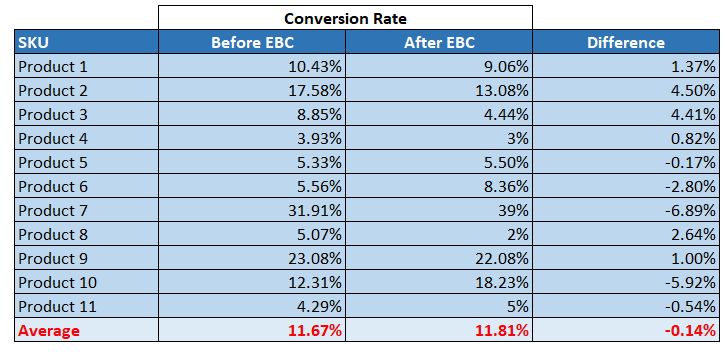
Of course, that's not to say we don't need A+ pages. We have to use A+ pages, after all, it's free. Just a suggestion not to expect too much from A+ pages.
Create readable and high-click product titles, not just for SEO
When we enter any competitive Amazon product category, you will always find some keyword-stuffed product titles. Despite the controversy over Amazon keyword optimization, I still firmly believe that product titles should not be used only for Amazon SEO purposes but should be created with a focus on being more readable and more clickable. From an Amazon Market Research report in the image below, we can see that those items that rank higher instead have more refined titles.
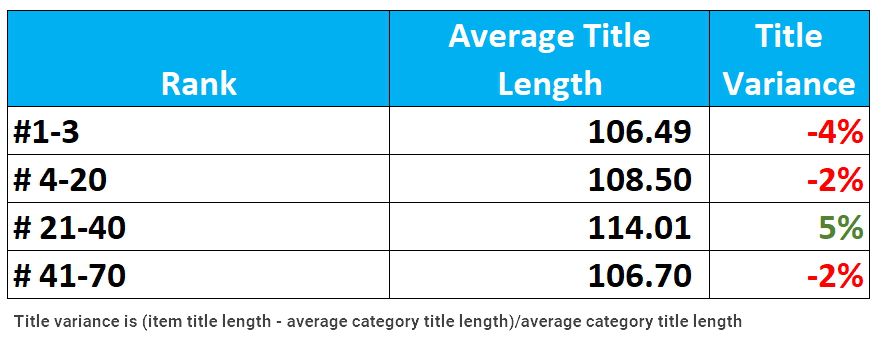
We should of course include keywords in product titles to get buyers to find our products, but our ultimate goal is to entice them to click/buy our products as much as possible.
Increase sales velocity
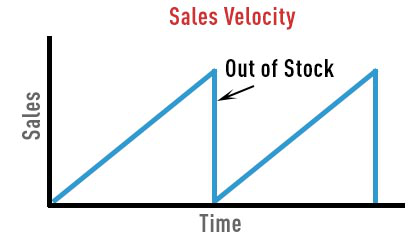
It is recommended that sellers and friends must pay attention to the third very important ranking factor of Amazon's A9 algorithm: sales speed. Sales velocity is a bit of a black hole in theory: we know it exists and we know it definitely affects listing rankings, but we don't know how it works. But there seems to be a consensus: if our sales velocity keeps increasing, the higher and faster we will rank. This also explains why when our inventory is sold out, it takes us a long time to get back into sales, because our sales velocity basically starts from zero.
At the same time, we need to note that a 30-day continuous sale is more effective than a 1-2 day quick sale. This strategy is used more when attracting traffic outside the site. For example, if you plan to promote new products through EDM, then it is better to divide the month into 4 phases rather than sending these promotional emails all at once.
Conduct off-site drainage
From the decrypted internal report, we also know that Amazon absolutely tracks the source of Listing traffic, whether it comes from on-site or off-site. There are many reasons for Amazon to do this, but it is believed that listings that bring off-site sales will receive weighted rewards and traffic recommendations. It's also very necessary from a sales velocity standpoint: say Amazon only allows you to run 0-60 yards, but when we're draining traffic from offsite, you can go much larger than 60 yards.
In fact, on today's Amazon platform, with the experience of the editor, it would be difficult for us to get a high ranking if we did not conduct off-site drainage. One of the most obvious facts is that Amazon is actively advising sellers to spend more advertising budget to build their own user base.
Some proven Amazon traffic channels include:
On-site customer mail
your standalone page
Take advantage of discounts and free products
One of the most effective ways to drive off-site traffic is through discounts and giveaways, and Amazon publicly allows us to create these discount and promotion options in the Seller Central.
There is an American proverb that says: The quickest way to make $1,000,000 is to sell $20 for $1. This same rule applies to Amazon today: How to sell a lot of inventory fast? Discount/Free Promotion!
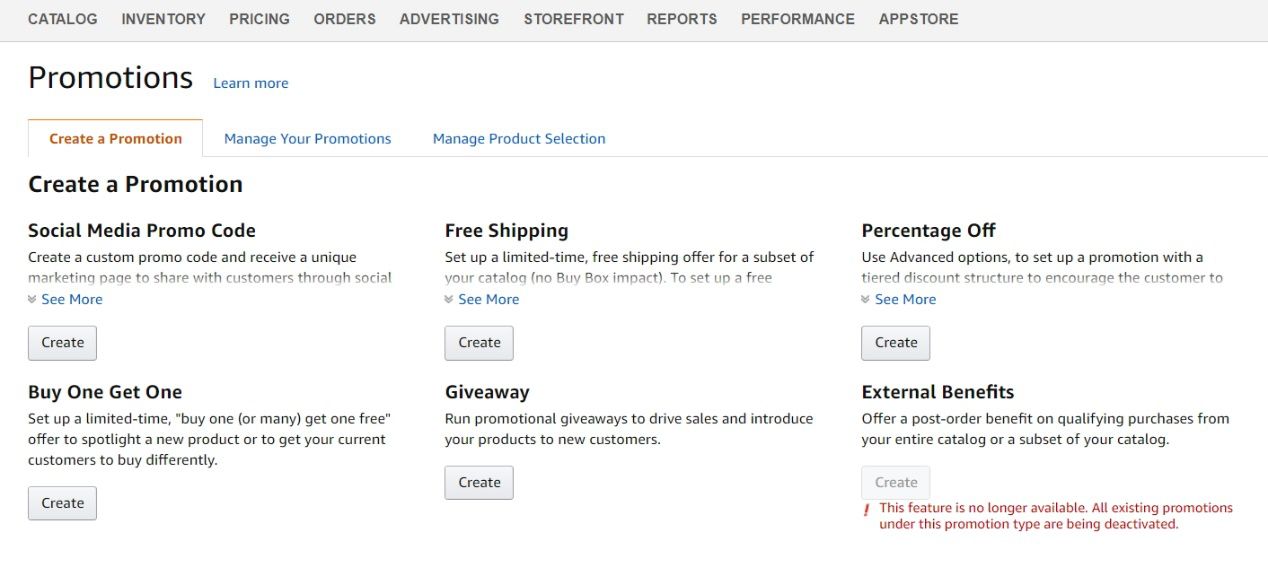
Exchanging reviews for free products used to be an essential new product business idea, but Amazon officially closed this road in 2016. However, offering free/discounted products is still a perfectly acceptable and still not outdated operational strategy as long as we don't publicly trade reviews in exchange. It will have the following positive effects: help increase sales (meaning faster sales) and increase the chance of being rated.
But there are also two problems with free/discounted products. The first problem is that products with 25-50% off discount will not be able to get VP evaluation. Reviews that do not receive the VP mark cannot exist stably and will likely be cleaned up in Amazon's next review review.

The second problem is that the sales we generate by offering free/discounted products off-site do not get keyword conversion weighting because there is no data on these sales on Amazon. Of course, there are voices of doubt that discounts/free sales just don't get the same weighting as full-price sales.
Get the chance to be on the homepage
We all know that the first page is a very positive listing ranking result, and the editor also hopes that all sellers who read this article have the opportunity to rank on the first page of Amazon's search. However, how many items can appear on the Amazon homepage depends on a number of factors, including: categories, keywords, and devices. Generally speaking, the number of products that can appear on Amazon's homepage ranges from 24-54, which means that a keyword ranking at #25 may sometimes be on the first page, but sometimes it is embarrassing, so we try to keep #24 or even higher In this way, we can attract more buyers' attention.
Ranking is our top priority on any e-commerce platform. A higher ranking means more traffic, and more traffic means more sales.
In order to create a better Listing ranking, we have to fully leverage the Amazon A9 algorithm rules, which means that we not only increase the relevance of Listings, but also increase the conversion rate of Listings, and at the same time increase the sales speed of Listings. The A9 algorithm is the foundation of Amazon, and it is also a treasure that every seller needs to use to strengthen himself.
Previous:How to extend the life cycle of Amazon products? Operational thinking test
Next:The traffic of old links is getting less and less, and the sales are stagnant. What is the reason?